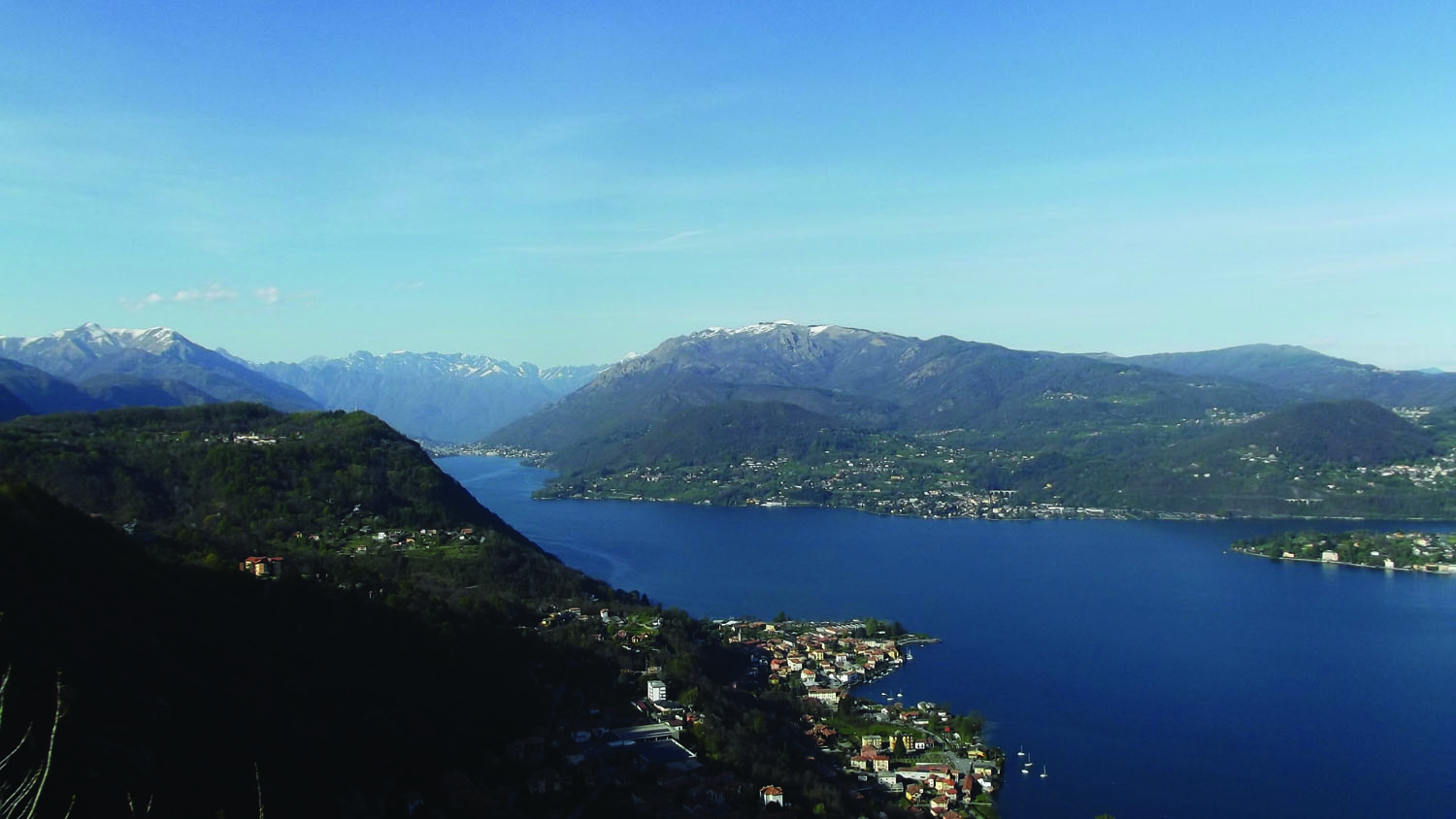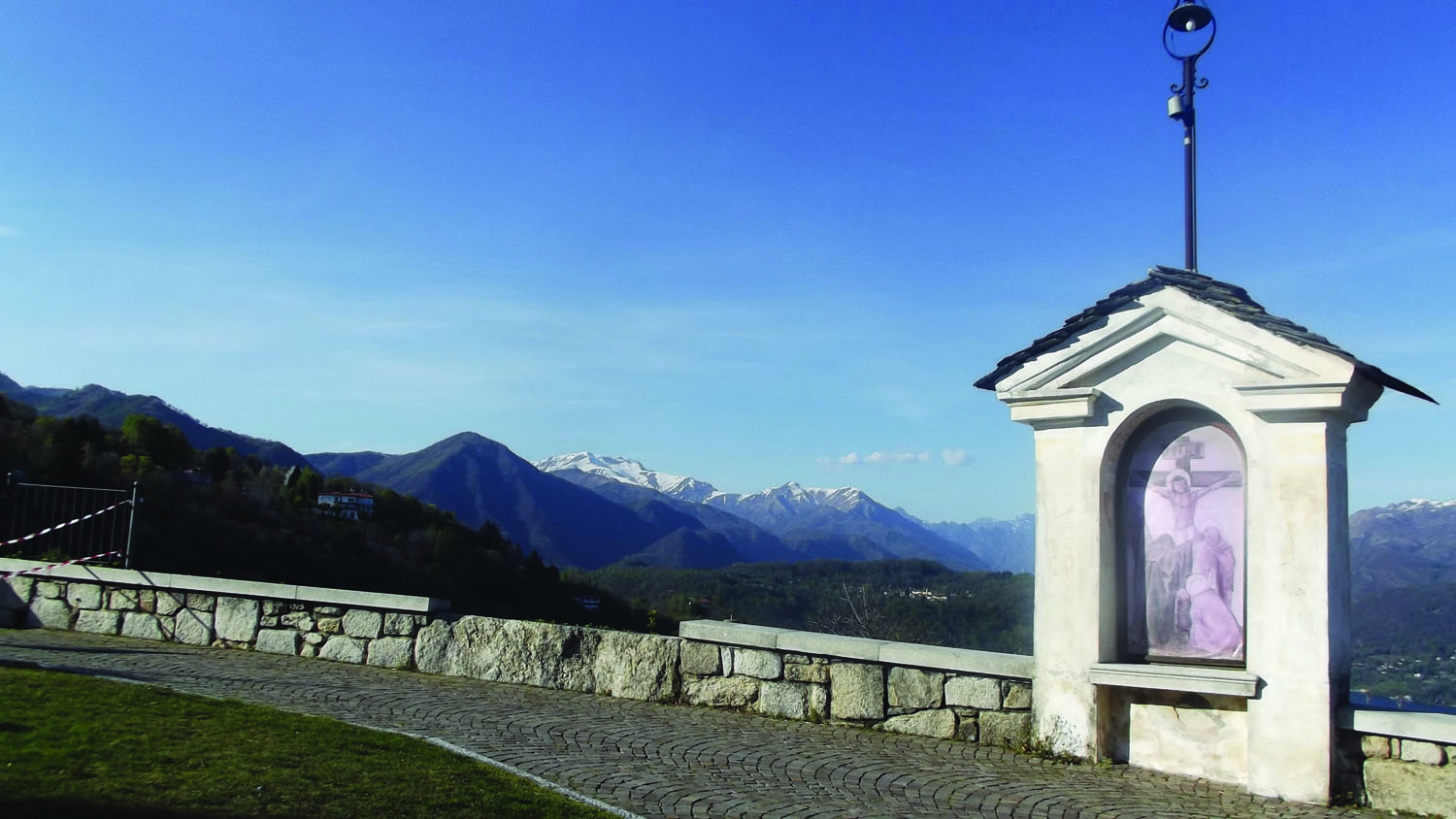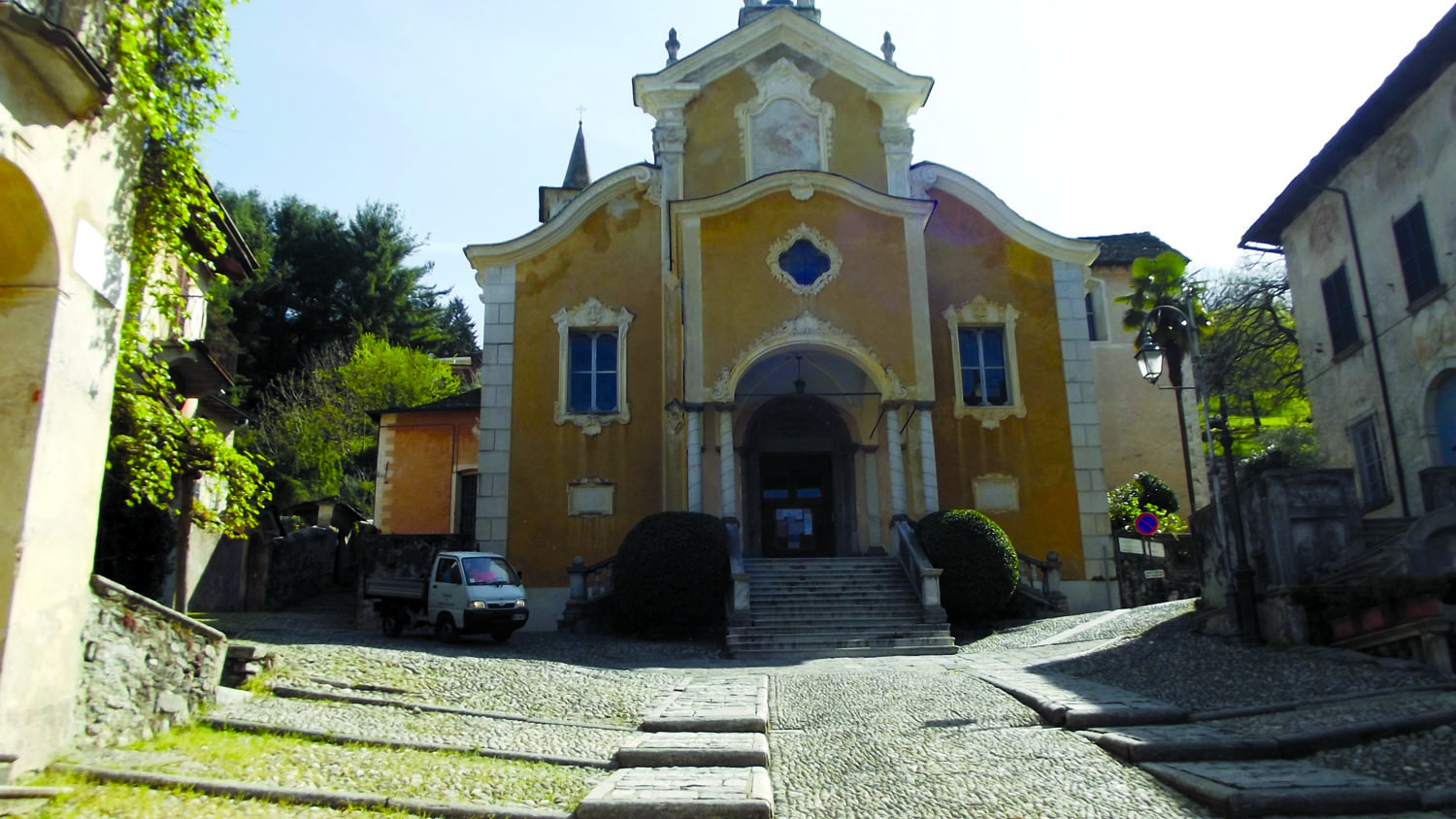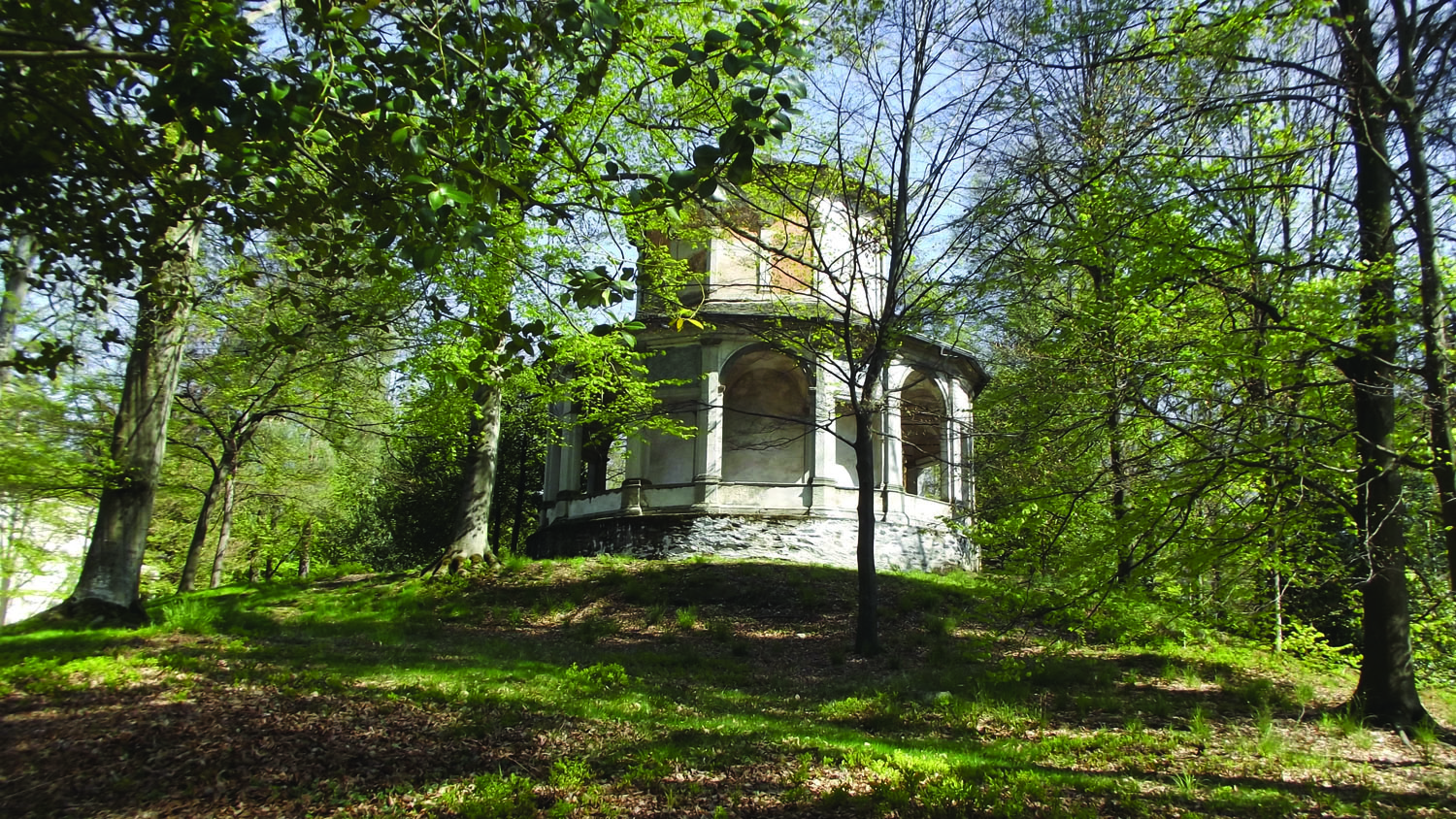Peaceful, quiet and smaller than some of the country’s more famous lakes, Lake Orta gave Jane Keightley the chance to consider the understated beauty of this sub-Alpine secret…
Described by Honoré de Balzac as “a pearl, enclosed by the green treasure chest of the Piemontese hills”, Lake Orta is one of the smallest of the Italian lakes, and the only one to lie entirely in Piedmont. The main attractions, apart from the beautiful scenery, are the medieval village of Orta San Giulio and the island of San Giulio, which sits just opposite it. I had been inspired to visit Orta after reading a novel set there and, as I made my way down towards the village, it was certainly living up to my expectations.
As soon as I had unpacked I headed off towards the main square, Piazza Motta, where, after a long day’s travelling, I sat and relaxed over a large glass of red wine and a delicious risotto made from saffron, rabbit and balsamic vinegar, whilst watching the sun go down over the island. Piazza Motta, which is known as the salotto, or drawing room, of Orta, is surrounded on three sides by ancient porticoed palazzos, some covered in frescoes, whilst the fourth side looks out towards the island. Behind a row of horse chestnut trees boats are moored, waiting to ferry you over to the island.

The most important building in the square is the Palazzotto, which was the old council chamber. Covered in frescoes, it has a loggia underneath it and is now used periodically for exhibitions. Now replete from both the food and the view I wandered back to my hotel, thankful that cars are not allowed into the narrow medieval streets.
The next morning I was eager to explore more thoroughly and I started off by looking round the village. Off the Piazza Motta a wide street leads uphill to the parish church of Santa Maria Assunta, a pale peach baroque building founded in the 15th century. On either side of the street are various palazzos, including the Palazzo Gemelli and the Casa dei Nanni (house of dwarves) which takes its name from its dwarf-sized windows. Down the hill I explored the rest of Orta’s narrow medieval streets, which are lined with restaurants and gift shops, and I also visited the gardens of Casa Bossi, which overlook the lake. I now headed across to Isola San Giulio, which is dominated by its large white convent and the tower of the medieval basilica. Legend has it that the island was the home of dragons and serpents until 390 AD, when Julius, a Christian from Greece, arrived. He wanted to cross over to the island but nobody would volunteer to row him across, so he calmly used his cloak as a boat and his staff as a rudder and sailed across and vanquished the monsters. He built himself a church and was laid to rest there in 392 AD. He now lies in the crypt of the 11th century church which replaced it. This has a very impressive interior, some well preserved frescoes and a magnificent pulpit made from black serpentine stone quarried from nearby Oira, with carvings denoting Good winning over Evil. Look out for the crocodile fighting with the phoenix.
Before you walk around the island make time to visit the only shop on the island, which is full of local products, some of them made by the nuns. A narrow cobbled lane leads round the island and the nuns have tried to maintain the tranquillity of the place by putting up signs advocating silence and meditation, though these are largely ignored…

Back on dry land I enjoyed a delicious lunch before heading off to the Sacro Monte. The Sacro Monte di San Francisco is a UNESCO World Heritage Site which consists of a hill dotted with 20 chapels all illustrating the life of Saint Francis of Assisi. This lies just behind Orta San Giulio. Not feeling particularly energetic after my lunch I was pleased to find out that once you get to the top of the hill the chapels are pretty much on the same level. The chapels were all built at different times, in different styles, between 1591 and 1788 and are decorated with frescoes and terracotta figures depicting the life of St Francis. The chapels are all numbered and a finger on each one points you in the direction of the next. It is well worth spending an hour or two wandering around this peaceful place where, as well as being able to enjoy the chapels, you can get beautiful views of the lake and the island. Of all the Sacri Monti in Italy this is the only one dedicated to Saint Francis – all the others are devoted to Christ.
As I sat having a gelato back down in the village I noticed a tiny white building high up on a rocky outcrop on the opposite side of the lake. I found out that it was the Madonna del Sasso Sanctuary and that from up there you could view the whole lake – and even see Milan on a clear day. I decided to see this for myself. After a tortuous journey up the mountainside, round numerous hairpin bends, I finally got there and it was certainly worth the effort. The brilliant blue lake shimmered below, surrounded by the snow-capped mountains and, as promised, I could see Milan far away in the distance.

Unfortunately, by the time I got there the pretty baroque church was closed. On the outside of the church, however, there is a version of Rome’s Bocca della Verità (Mouth of Truth) where, legend says, you are liable to lose your hand if you put it in the stone lion’s mouth and tell a lie. By now I was tired and hungry and I headed back to Orta San Giulio looking forward to a relaxing evening and more good food.
The next morning I decided to head off to explore the rest of the lake. My first stop was San Maurizio d’Opaglio, where I found the Museo del Rubinetto – the tap museum.
I wondered how interesting a whole museum about taps could be but I was pleasantly surprised. I was shown round by S. Del Duca from the Ecomuseo del Lago d’Orta Association, who explained the history of tap making in the local area. It was fascinating. I’ll never look at taps in the same way again! I then went on to Omegna which, although not as obviously picturesque as Orta San Giuilio, is a pleasant town. Omegna is famous for being the home of the Italian kitchenware industry and being the headquarters of Alessi and Bialetti and has several factory outlets selling their wares. In the centre of the town is a fascinating museum showcasing the history of kitchenware produced in this region. An interesting fact about the river that flows through Omegna is that it flows north, unlike the other rivers of the Italian Lakes, which all flow south. This has given rise to a saying in the local dialect, “La Nigoglia la va in su e la legge la femo nu!” which means, “The Nigoglia runs upwards and we make our own laws!”
As I returned back to Orta San Giulio I passed through the village of Legro, which has become famous for the frescoes painted onto the houses, inspired by the work of the local poet and writer Gianni Rodari and by films made in the Lake Orta area.

Back in Orta, I decided I would walk round the whole of the peninsula that Orta is situated on. This path, called the Lungolago 11 Settembre 2001, gives many different viewpoints of the lake. As I walked I admired Orta’s most distinctive hotel, Villa Crespi, which is located away from the lake in its own grounds. This amazing building, which resembles a Moorish palace with its minaret, dates from 1879, when Cristoforo Crespi, a cotton trader who made his fortune in Baghdad, returned to Orta and built a palace to remind him of the East. It is now a four-star hotel with a two Michelin starred restaurant.
My stay in this peaceful place was now drawing to a close and although I had managed to fit in a great deal, 48 hours was not long enough and I would love to return and have time to try some of the beautiful and scenic walks in the area and visit Lake Orta’s own sandy beach, Spiaggia Miami.
Click here for Jane’s Top Tips on what to see and do, where to eat and drink and what not to miss in Lake Orta!
Photography © Jane Keightley
